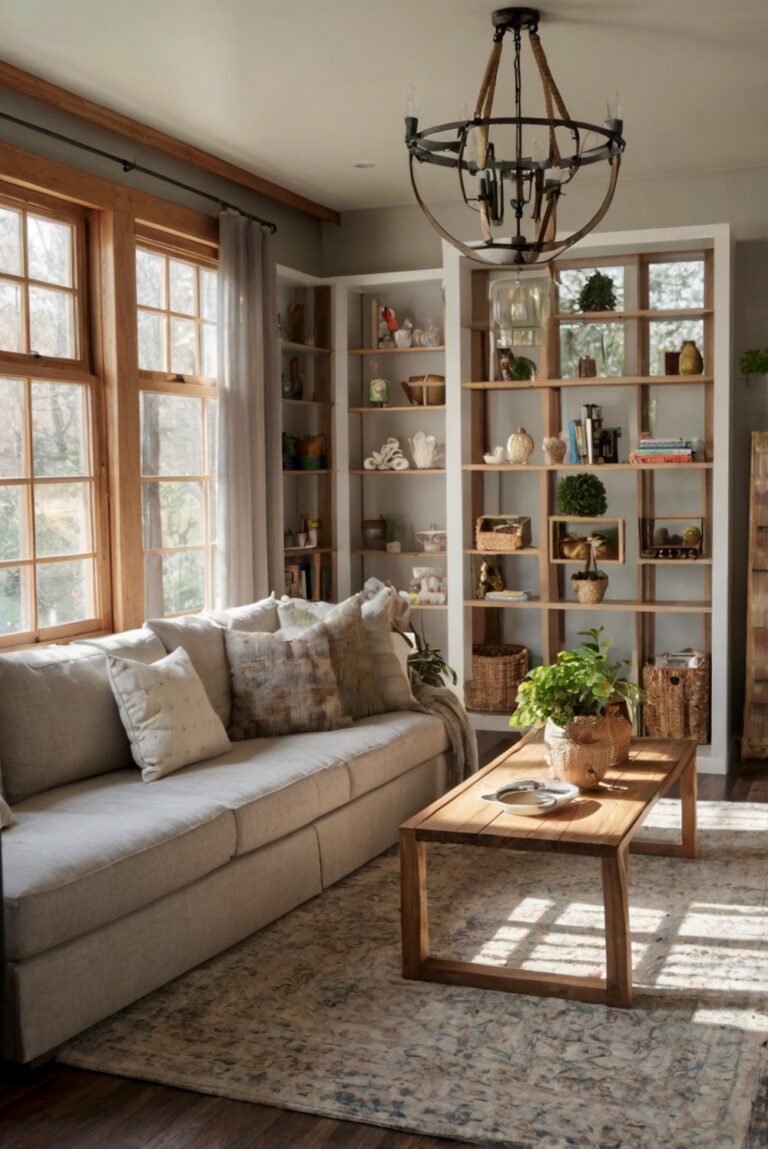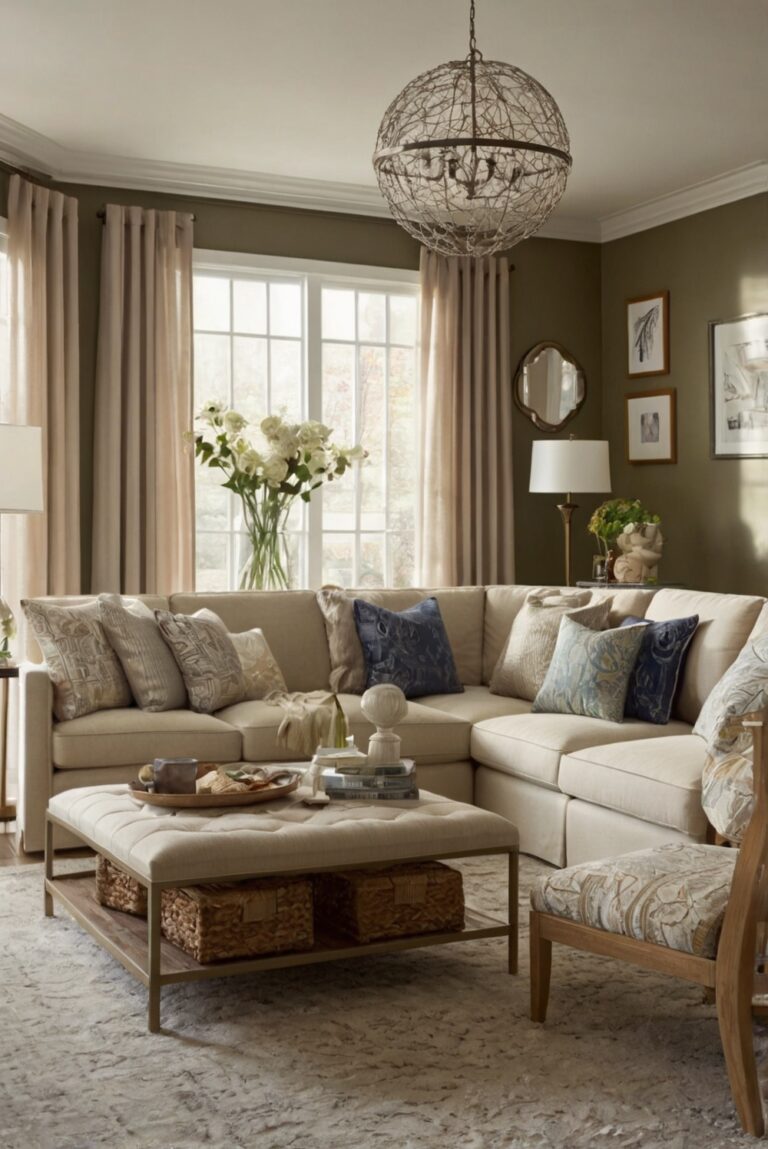Create harmony in your living space with this guide on feng shui for your furniture layout. Discover daily interior designer routines to create a balanced and inviting environment.
To Feng Shui your living room furniture layout, start by placing the sofa against a solid wall to provide support and stability. Ensure that the furniture arrangement allows for a clear path to the main entrance to allow positive energy to flow freely. Use a balance of colors and textures to create harmony in the space. Consider incorporating elements of nature, such as plants or natural materials, to promote a sense of tranquility. Avoid clutter and opt for clean lines to help create a peaceful environment. By following these tips, you can create a balanced and harmonious living room that promotes positive energy flow and enhances your overall well-being.
How to Feng Shui Your Living Room Furniture Layout?
Why is Feng Shui Important for Your Living Room Furniture Layout?
Feng Shui is essential for your living room furniture layout because it creates a harmonious and balanced environment that promotes positive energy flow. By following Feng Shui principles, you can enhance the overall energy in your living space, which can lead to improved health, wealth, and relationships. Your living room is a vital area where family and friends gather, so ensuring that the furniture layout is aligned with Feng Shui guidelines can create a welcoming and peaceful atmosphere.
How to Arrange Your Living Room Furniture According to Feng Shui?
When arranging your living room furniture according to Feng Shui principles, it’s important to consider the following key points:
– **Position of the sofa:** The sofa should be placed against a solid wall for stability and support. Avoid placing it in the middle of the room or facing a door directly.
– **Balance:** Ensure a balance of yin and yang energies by arranging furniture in pairs or symmetrical layouts.
– **Clear pathways:** Keep the pathways in your living room clear to allow for easy energy flow and movement.
– **Avoid clutter:** Clutter can block positive energy flow, so keep your living room organized and free of unnecessary items.
– **Use natural materials:** Incorporate natural materials like wood, stone, and plants to bring in positive energy and create a connection with nature.
What Furniture Should You Include in Your Living Room for Good Feng Shui?
To enhance the Feng Shui of your living room, consider including the following furniture pieces:
– **Sofa:** Choose a comfortable and high-quality sofa that promotes relaxation and comfort.
– **Coffee table:** Opt for a round or oval-shaped coffee table to encourage smooth energy flow.
– **Armchairs:** Place armchairs in pairs to create a balanced seating arrangement.
– **Plants:** Bring in plants to add a touch of nature and improve air quality in your living room.
– **Mirrors:** Use mirrors strategically to reflect light and expand the space, but avoid placing them directly across from the sofa.
What are Some Feng Shui Tips for Arranging Furniture in a Small Living Room?
In a small living room, it’s essential to maximize space and create a sense of openness. Some Feng Shui tips for arranging furniture in a small living room include:
– **Multi-functional furniture:** Choose furniture pieces that serve multiple purposes, such as a storage ottoman or a sofa bed.
– **Vertical storage:** Utilize vertical storage solutions like shelves or wall-mounted cabinets to save floor space.
– **Lighting:** Ensure good lighting in the room to create a sense of spaciousness and enhance the overall energy flow.
– **Color scheme:** Use light and neutral colors to make the room feel more expansive and inviting.
– **Declutter regularly:** Keep the space clutter-free by regularly decluttering and organizing your belongings.
How Can You Maintain Good Feng Shui in Your Living Room?
To maintain good Feng Shui in your living room, consider the following tips:
– **Regular cleaning:** Keep your living room clean and organized to prevent stagnant energy from accumulating.
– **Natural light:** Allow natural light to enter the room by keeping windows unobstructed and using sheer curtains.
– **Air purification:** Keep the air in your living room clean and fresh by incorporating air-purifying plants or an air purifier.
– **Energy flow:** Regularly move furniture around or change the layout to encourage positive energy flow and prevent stagnation.
– **Personal touches:** Add personal touches like family photos or meaningful artwork to create a space that reflects your personality and values.
1. How can I optimize the Feng Shui of my living room furniture layout?
To optimize the Feng Shui of your living room furniture layout, consider the placement of key pieces like the sofa, coffee table, and TV. Position furniture in a way that promotes a good flow of energy (Chi) and allows for easy movement throughout the space. Avoid blocking doorways and windows with furniture, and aim for a balanced arrangement that creates a harmonious atmosphere. Incorporate elements of nature such as plants and natural materials to enhance the positive energy in the room. By following these principles, you can create a space that feels inviting and promotes well-being.
2. What are some common Feng Shui mistakes to avoid when arranging living room furniture?
Common Feng Shui mistakes to avoid when arranging living room furniture include placing the sofa directly in line with the door, as this can disrupt the energy flow in the room. Avoid cluttering the space with too much furniture or decor, as this can create a sense of chaos and block the flow of positive energy. Additionally, be mindful of the placement of mirrors, as they can reflect and amplify energy, so avoid placing them directly across from each other. By being aware of these common mistakes, you can create a more balanced and harmonious living room layout that promotes positive energy.
3. How can I incorporate color into my living room furniture layout to enhance Feng Shui?
When incorporating color into your living room furniture layout to enhance Feng Shui, consider the principles of the five elements (wood, fire, earth, metal, water) and how they interact with each other. For example, you can use earthy tones like brown and green to create a sense of stability and grounding in the space. Introduce pops of color like red or orange to bring in the fire element for passion and energy. Blues and blacks can represent the water element for calmness and introspection. By strategically using color in your furniture and decor, you can create a balanced and harmonious living room that promotes positive energy flow.
4. What furniture placement tips can help improve the Feng Shui of my living room?
To improve the Feng Shui of your living room through furniture placement, consider the following tips:
– Position the sofa against a solid wall to provide support and stability.
– Place the coffee table within easy reach of all seating areas to promote conversation and connection.
– Allow for a clear pathway through the room to facilitate the flow of energy (Chi).
– Use area rugs to define different zones within the living room and anchor the furniture.
– Incorporate natural materials like wood and stone to bring in elements of nature and promote a sense of balance.
By following these furniture placement tips, you can create a living room layout that promotes positive energy and enhances the overall harmony of the space.
5. Are there specific Feng Shui guidelines for arranging furniture in a small living room?
When arranging furniture in a small living room to optimize Feng Shui, consider the following guidelines:
– Choose furniture that is proportional to the space to prevent overcrowding.
– Use multifunctional pieces like storage ottomans or nesting tables to maximize functionality.
– Opt for furniture with rounded edges to soften the room and create a more welcoming atmosphere.
– Avoid blocking natural light sources like windows to keep the energy flow (Chi) vibrant.
– Use mirrors strategically to create the illusion of more space and reflect positive energy throughout the room.
By following these specific Feng Shui guidelines for arranging furniture in a small living room, you can create a harmonious and balanced space that feels open and inviting.







